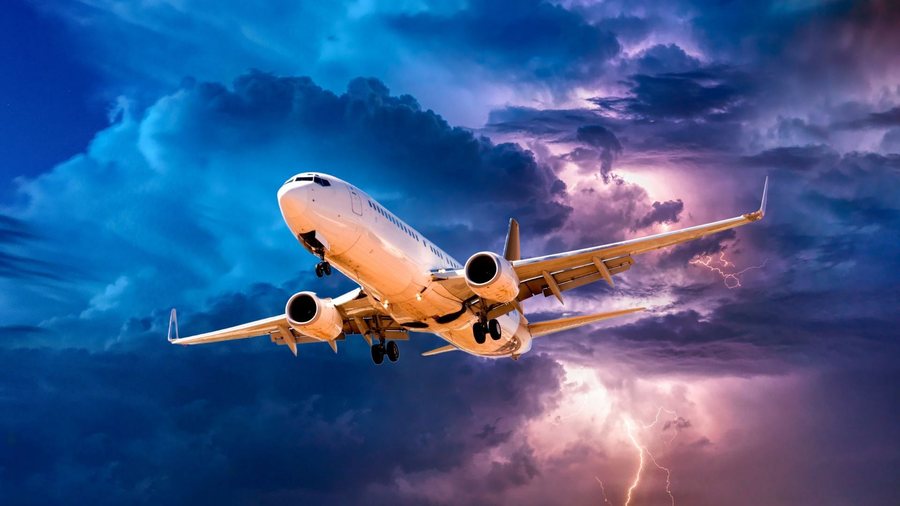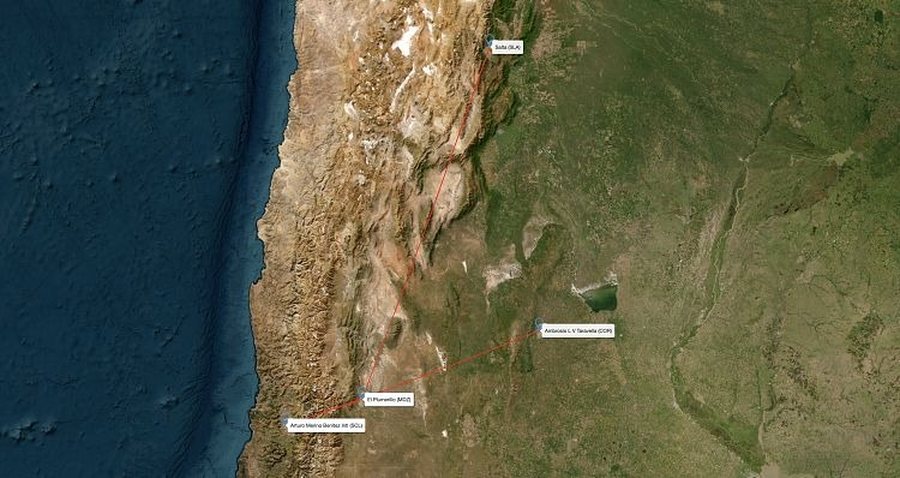Fasten your seatbelt: The most turbulent air routes in Europe have been revealed!

Eight of the ten most turbulent routes begin or end in the same place. It seems we're hearing more about turbulence in 2024 than ever before. Numerous reports of injuries on turbulent flights are making headlines, including a Singapore Airlines flight where a passenger lost his life.
This was the first time a person has been killed on a flight due to turbulence since 1997. Data from the US Federal Aviation Administration (FAA) suggests that from 2009 to 2023, 37 passengers and 146 crew members were seriously injured due to turbulence, and it remains the single largest cause of injury on a commercial flight.
Turbulence can happen anywhere, but certain characteristics can make it more prevalent. So where are the most turbulent roads in Europe and how do they compare to the rest of the world? New research from turbulence tracking website Turbli has revealed which roads in Europe are most likely to experience turbulence. Eight of the 10 most turbulent roads start or end in Switzerland, with others passing over or around the Alps.

To determine the possibility of turbulence, Turbli uses the Eddy Distribution Rate (EDR). This is a measurement of atmospheric turbulence that is independent of aircraft characteristics. It is the standard metric for aviation turbulence used by the International Civil Aviation Organization (ICAO) and the World Meteorological Organization (WMO).
In total, the most troubled roads in Europe in 2024 were:
· Nice - Geneva: EDR 16.07
· Nice - Zurich: 15.49
· Milan – Zurich: 15.41
· Milan - Lyon: 15.37
· Nice - Basel: 15.33
· Geneva – Zurich: 15.05
· Nice - Lyon: 14.99
· Geneva – Venice: 14.78
· Lyon – Zurich: 14.74
· Venice – Zurich: 14.67
According to Turbli, anything below an EDR of 20 is considered 'mild', with those between 20 and 40 being moderate. No road in the world is ranked as severe (40-60) or extreme (80-100) on an annual average basis, although some individual incidents may have exceeded these thresholds. However, extreme turbulence is uncommon in Europe, so even these more turbulent roads are unlikely to see some of the devastating incidents of recent months.
In comparison, the world's most turbulent roads were all in South America, traversing the Andes mountain range. The most turbulent road, with an EDR of 24.68, was Mendoza to Santiago, with Cordoba to Santiago in second place and Mendoza to Salta in third.

Should you be worried about turbulence and is climate change making it worse?
Modern aircraft are designed to handle even the most extreme turbulence events without being damaged. However, the same cannot be said for passengers. In all the turbulence events we saw in 2024, passengers who were securely strapped into their seats were able to exit the aircraft unharmed. It was the passengers and crew members who were not secured who suffered the most serious injuries.
Experts agree that turbulence is getting worse as a result of climate change. In particular, greater temperature extremes and stronger, more unpredictable storms mean that extreme turbulence events are likely to become more common. The University of Reading in the United Kingdom projects that by 2050 turbulence events will be twice as common.
The aviation industry is working hard to keep passengers safe. The International Air Transport Association (IATA) launched its Turbulence Awareness Platform in 2018, and now has over 25 airlines contributing and consuming data across more than 2,600 aircraft. Data from the platform is used in cockpit instruments and flight planning software to better predict and avoid turbulence.
In addition to data like this, pilots rely on sophisticated onboard weather radar systems to detect and avoid areas of turbulence. They also report to each other in real time if turbulence is encountered along a route. While airlines and aviation authorities are doing their part to help flights avoid turbulence, it can still be incredibly difficult to identify and avoid turbulent air. In particular, pure air turbulence, which has no visual cues for its presence, is nearly impossible to identify and avoid.
According to the National Transportation Safety Bureau (NTSB), in 28 percent of turbulence-related incidents, the flight crew received no warning that they were about to hit trouble. As such, the advice for passengers concerned about turbulence is to always keep their seatbelts fastened while on an airplane.

"EU to integrate energy market" - IMF calls for cooperation between countries to increase global competitiveness
European Union companies could become more competitive against their American and Chinese rivals if they pay less for energy. This goal can be achieved......

Albanians withdrew more money from ATMs - BoA: In January-November 2024, the transaction record of 2023 was exceeded
Despite the fact that in November there was a decrease in transactions carried out through ATMs, in 11 months the record of 2023 was exceeded. In the period......

Advantages and disadvantages of submarine cables - Study/ Energy line with Italy brings more flexibility to Albania
From the traditional transmission of electricity through poles to underwater cables. The agreement signed between Albania, Italy and the United Arab Emirates......

"Beware of fake sites that ask for bank details!" - Appeal of the Association of Banks: Do not show curiosity towards tempting offers on the internet
Cases of citizens' bank accounts being stolen from fake websites have been identified. So far, the people behind these scams are foreign nationals who make......

3.7 million lek fines for data abuse - Commissioner, 16 decisions and 20 recommendations in 2024
Albanian citizens are becoming more and more aware every day when it comes to protecting their personal data and preventing privacy violations. During 2024,......

"Oligarchy in the US is threatening democracy" - Biden warns of the danger of concentration of power in the country
President Joe Biden wrapped up a half-century of political career with a final speech in the Oval Office, hoping to leave a legacy despite Democrats' failure......

Global inflation, high until 2028 - Economists predict rates above central banks' targets
Economists expect global inflation to remain high until at least 2028, according to a new survey that could add to market concerns. Analysts predict an......

Bitcoin Soars Above USD 106,000 - The Cryptocurrency's Value Has Risen Over 50% Since The US Election
Bitcoin surged to a record high above $106,000 on Monday after President-elect Donald Trump suggested that he plans to create a strategic reserve of the......





















